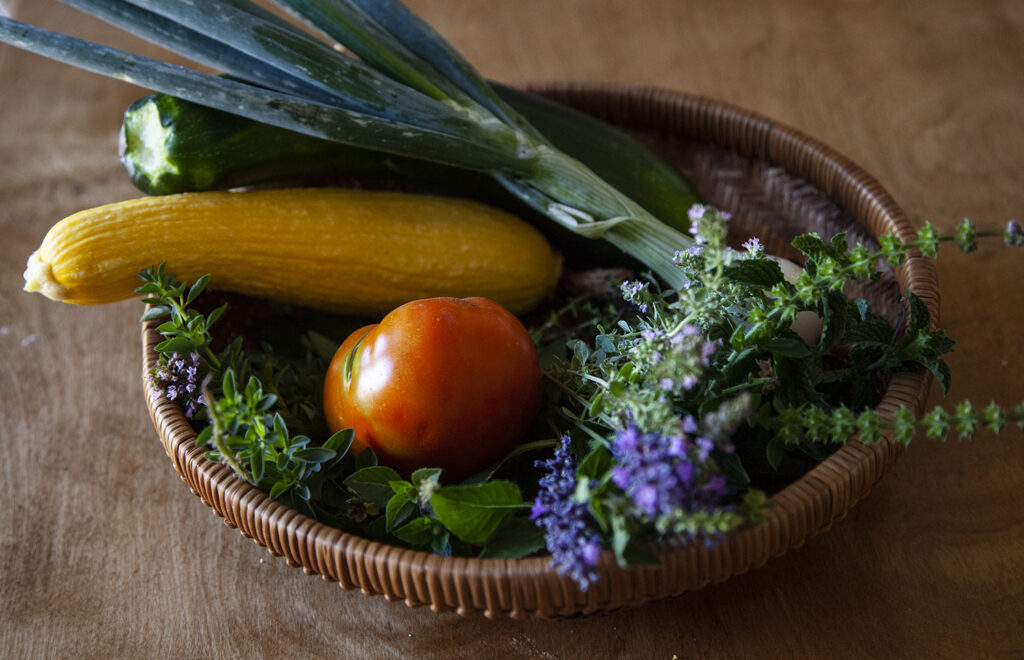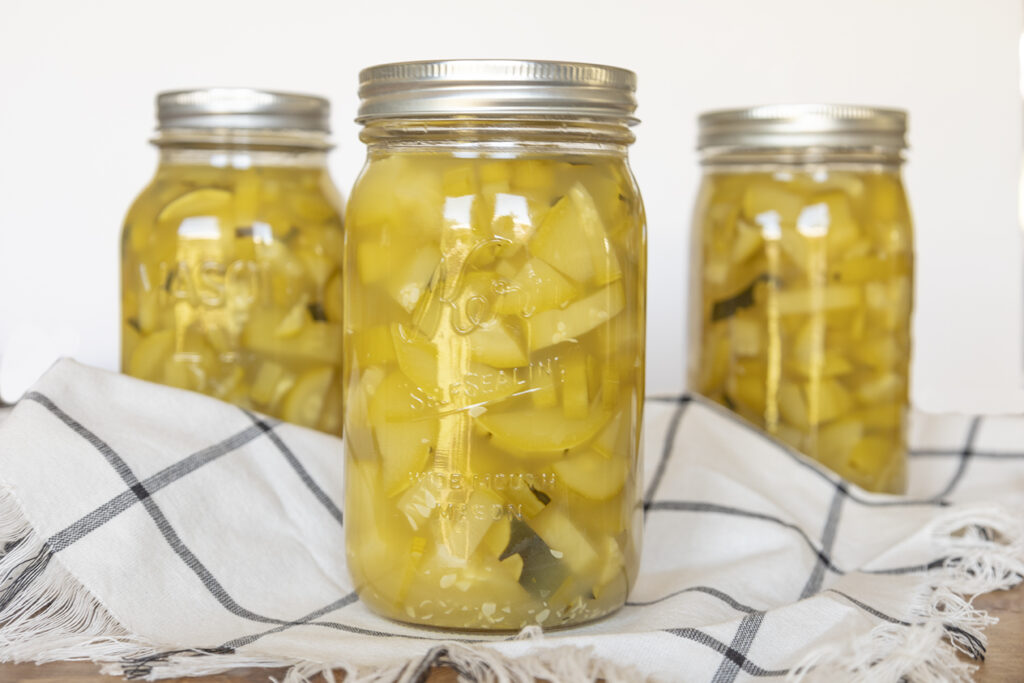By Bri Loveall
Preserve the fall harvest by canning or drying fruits and vegetables at home.
In the beginning, canning seemed daunting and impossible. That first year, my spouse was sure I would unintentionally kill us with botulism. There were new kitchen gadgets to buy, websites to scour, recipes to learn, not to mention I had to grow the food first.
I entered canning with an all-or-nothing attitude, which led me to a lot of frustration when I burned out in later years. If I was going to using canning to preserve food, I needed to do it the “right” way.
But canning, especially if you’re new to it, should be like any other skill we learn. Start small and give yourself grace. No one wakes up and, having never hiked, decides to tackle the Pacific Crest Trail, right?
Different Types of Canning
There are two different types of canning: pressure canning and water-bath canning. Foods low in acidity (meats, stock, and certain fruits and vegetables) must be canned using a weighted or dial gauge pressure canner.
For several years I stayed away from pressure canning simply because I didn’t have a canner. Luckily, many of the common items we see at the markets or grow in our backyards (tomatoes, cucumbers, and most fruits) only require the water-bath method.
Water-bath canning requires little special equipment and is far less intimidating than using a pressure canner. Canning kits are available at most stores and include a jar lifter, wide mouth funnel, magnetic lid lifter, and bubble popper (yes, that’s the actual name).
You’ll also need a stock pot deep enough to hold jars and a canning rack (a metal insert that keeps jars off the bottom of the pot to improve water circulation and reduce the risk of the jars touching each other during canning).
The actual canning process is relatively simple. Jars are washed, sterilized, and (usually) hot packed with whatever produce is being preserved. Processing times vary by recipe (and altitude), but most recipes for pint jars require less than twenty minutes in a stock pot full of boiling water.

Preserve Fresh Foods During Fall
September and October farmers’ markets should be full of easy-to-can fruit and vegetables in order to preserve the fall bounty. In the Northwest, look for cucumbers, tomatoes, zucchini, apples, pears, onions, cabbage, beets, and blueberries.
While canning enough food to feed yourself through the winter months requires hundreds of pounds of produce, a pound of vegetables will yield several pints of homemade pickles, crushed tomatoes for soups, pineapple zucchini (prefect with chicken and rice), homemade applesauce, cinnamon pears, or onion jam.
Jam is a great way to use up a berry harvest. Additionally, berries can be frozen for later use in smoothies or oatmeal. And even if your pantry only holds a few dozen jars, there is nothing more empowering in the kitchen than making tomato soup from scratch using a few jars of tomatoes that you canned yourself. (Plus, it’s seriously delicious.)
More Canning Tips and Tricks
- Work in small batches. For example, when making jam, if your canner only holds four- or five-pint jars, only fill that many jars to process at one time.
- Find a friend who’s willing to host a canning party.
- Observe and learn from an expert: The first year I started canning, my spouse and I spent a day with an older woman in our community as she canned several hundred pounds of produce in one day. (I do not recommend this for new canners.) She explained different techniques, terminology, and the things she’d learned along the way. At the end of the day, we took home a half dozen jars of pears, green beans, and tomatoes. A great way to learn to can is to find someone who already does it and follow along.
- Educate yourself: If you don’t have a fun old woman in your community, the USDA publishes a canning book full of recipes, safety guidelines, and general canning knowledge that makes it easy to start your canning journey.
Easily Dry Fresh Foods
An even easier form of food preservation is accomplished through dehydration. No dehydrator? No problem. Most foods can be dehydrated using an oven at the lowest setting, or even the sun (hello, sun dried tomatoes).
Herbs like dill, basil, thyme, oregano, rosemary, sage, and parsley, can be dried separately and then blended to create your own seasoning and dry rubs. Strawberries, blueberries, and raspberries should still be available in the markets, and when dried, make excellent additions to homemade granolas or oatmeal.

Recipe: Pineapple-zucchini
Peel and chop zucchini (de-seed if necessary). In a large Dutch oven, combine equal parts chopped zucchini and pineapple juice with sugar (the amount of sugar is dependent on preference and the amount of zucchini being used). Bring to a boil and then reduce heat and simmer uncovered for 20 to 30 minutes or until desired consistency is reached. Serve warm over rice.
When she isn’t tending her garden, reading, or building forts with her four children, Bri Loveall is usually whipping something up in the kitchen. Her current obsession is pineapple-zucchini.
Find Food & Drink stories and more Outdoor Living column articles in the OTO archives.













